If you’re struggling to write website content, you’re not alone. Small businesses around the world are on that same struggle bus. Whether you’re writing the first words for an all-new site or undergoing a website redesign, it’s a daunting task.
Rather than looking at your whole website as an unfriendly void, you can make it easier on yourself by identifying the types of content you need, and what goes where. If you slice it up into bite-sized pieces, it will feel much easier to manage.
But how do you figure out what to write? Let’s use an analogy that makes everybody smile: pizza.
No matter where you live or what you do for a living, you know how to order a pizza. Heck, you might even be good at making one! There’s nothing scary about pizza.
Believe it or not, website copy has the same ingredients as a classic pizza. Which means that if you can figure out what you want on a pizza, you can write website content.
Can I do this if I’m not a writer?
Yes.
Wait, really?
Here’s the wonderful thing about modern websites: it’s not always about writing like a polished English major. Yes, in some cases a website does need to have flawless grammar and adhere to strict rules, such as medical and legal websites.
But for most small businesses, it’s actually more important that you sound like a person – one that your customers can trust.
That’s not to say you should skip the spell-checker and write like how you text your partner from the grocery store. Frequent grammatical mistakes cause a poor user experience, which in turn impacts your search ranking.
What it means is that for many industries, it’s fine to use more relaxed, conversational language on your website.
Here are five quick ways to decide what your writing should sound like:
- Follow your company’s brand strategy and brand identity guidelines – this should contain specific voice and tone direction for copy
- Check out competitor websites to see how they talk about similar products and services
- Review the comments on your social posts and on competitors’ social posts to see how customers talk about what they need
- Use an SEO tool or Google Search Console data to see what customers actually type into search engines that leads them to your site
- Study customer service communications like website form responses, chatbot dialogues, and emails to get a sense for how talk about their problems
A website that uses customer-friendly language will attract search traffic, and put people at ease.
Build your pizza: how to write tasty website content
Think about your favourite kind of pizza. What do you love about it? Why?
That dreamy slice may be your top pick because of the specialty crust, but it isn’t only great because of the crust. If the sauce, cheese, or toppings don’t work, a savoury crust goes to waste. It’s the glorious harmony of these key ingredients that makes the perfect pie.
The same is true of your website. So climb into your stretchy pants (bonus points if you’re already wearing them because #WorkFromHomeLife) and let’s go!
The Crust
Without a crust, you have no pizza. I mean, you could make a bowl of saucy cheese and toppings and it would still taste amazing – but it’s not the same.
Your website’s crust is your core content. It’s the reason customers come to you: what you sell or do that solves a problem they have. You couldn’t properly represent your business online without it.
Examples of core content:
- Products
- Services
- Projects or case studies
- How it Works or Process pages
- FAQs
When we help clients gather their content for a new web design, we get them to start with their core content. You talk about your products or services all day, either within your team or with customers. This is the place you’re a subject matter expert, so it’s often the easiest to write.
A customer looking at your core content has a lot of questions, but they’re also close to a conversion if you can nudge them over the line.
5 Tips to Write Strong Core Content
1. Write like a human: Refer to the list in the top section to find the ideal writing style. Your website is for your customers, so you need to describe products and services in the words they would use and understand. Avoid industry-speak and technical jargon, then check yourself by having a friend outside your industry read your copy to see if it makes sense to them.
Envisio is a cloud-based strategic planning platform that’s popular with government organizations. Their copy is easy to read for the type of person who might be great at strategic planning, but not an expert in software:
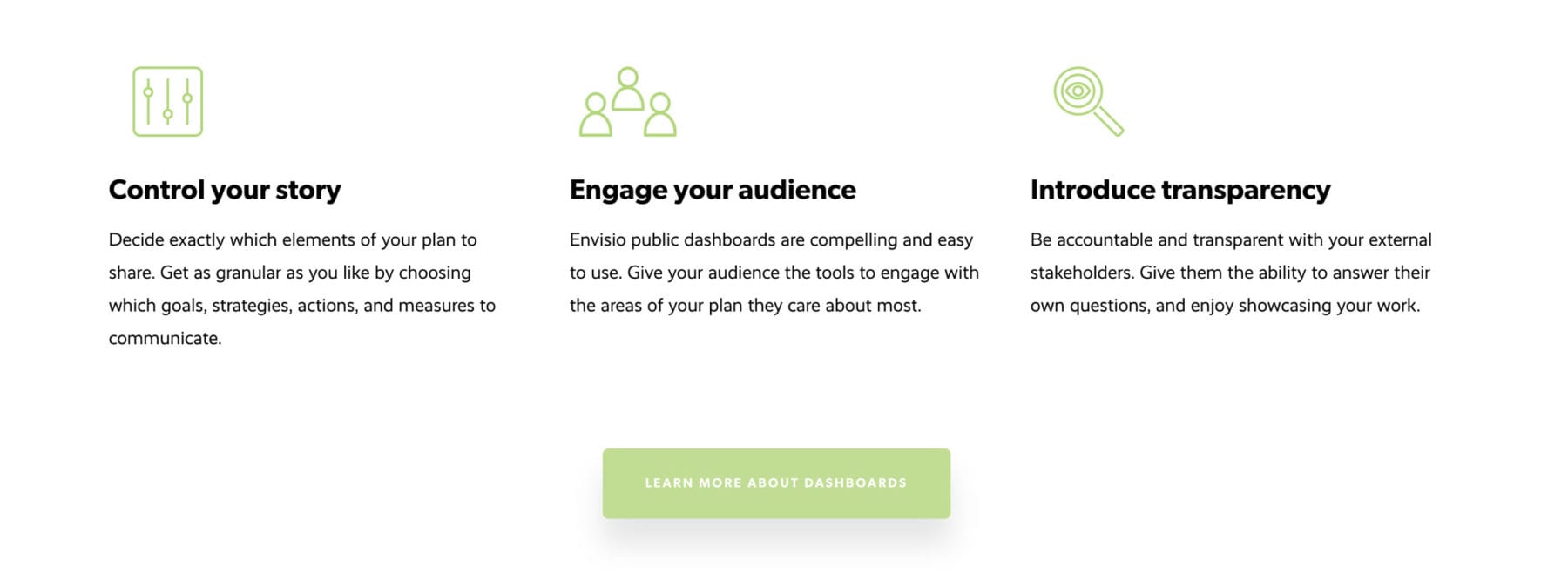
2. Make it all about them: Rather than just describing what you do or offer, describe the direct benefit to your customer. How will it make their daily life better, easier, or more efficient? If you focus on writing about desirable outcomes, you stand a better chance of making the conversion.
A well-written case study isn’t just quickly describing what you did and why you’re awesome. It should allow the reader to see how you helped a business like theirs achieve an exciting outcome, so that they can see how you might do the same for them.
We actually put a lot of work into our own web design case studies – take a look to see how we write them!
3. Less is more: Even if you have a complex product, such as software, your main pages shouldn’t look like a wall of copy. The goal of B2B core content is to start the conversation – get the customer to make contact.
If you need to share heavy details like product specs or troubleshooting guides, you can offer that information in creative ways that don’t overwhelm everyone else viewing that page: expandable content blocks on individual product pages, downloads, FAQs, or a Resources page.
Motio offers custom software that improves the experience of using complex business intelligence software. Their simple, human overviews make the benefits super clear! And if a visitor wants to know more, they have product detail pages with overviews and downloads.
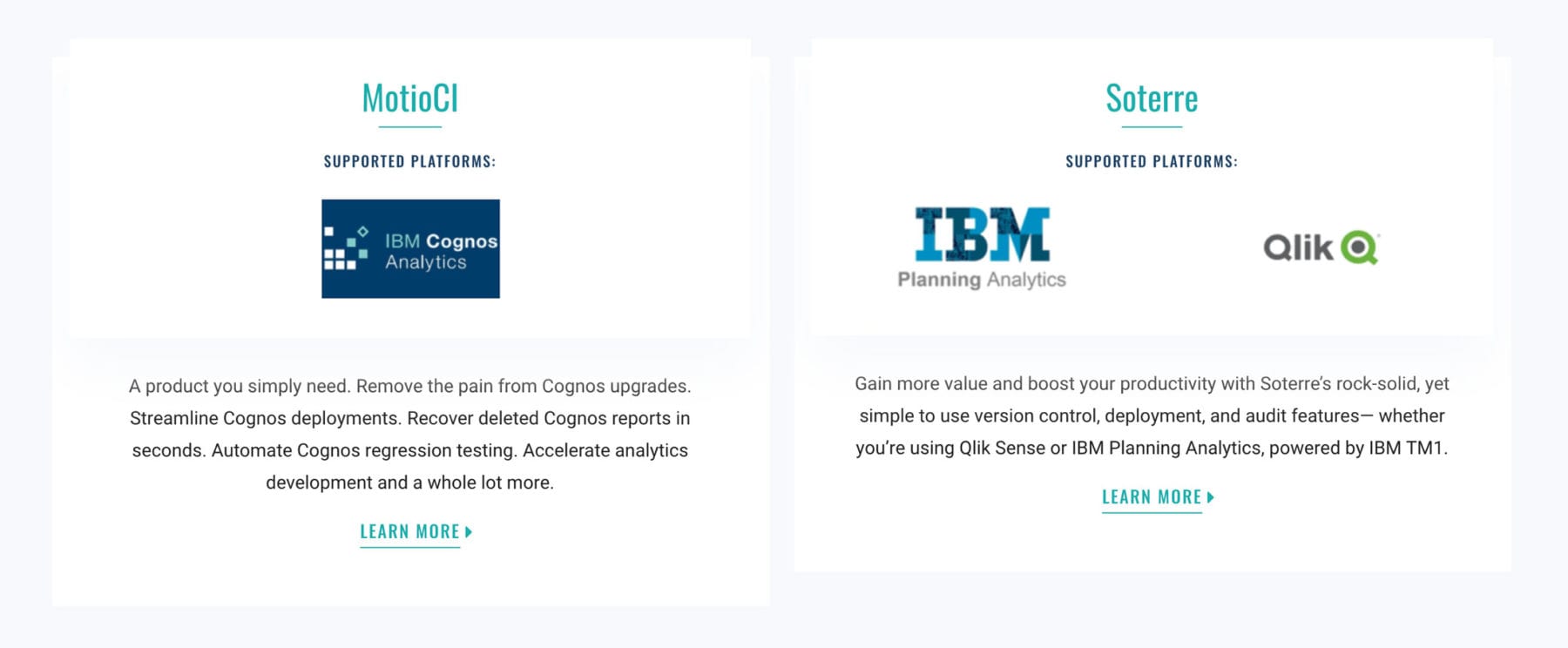
4. Answer the big questions: Speaking of FAQs – use your data on the questions customers ask to provide that information up front. Some websites have an FAQs page, while others include FAQs on each product or service. Remember that your website serves visitors 24/7. Providing answers outside office hours, when someone is researching your business, can help you get that lead instead of a competitor.
5. Boost it with social proof: You don’t have to write all of the words on your website. In fact, testimonials can increase conversions by 34%! Rounding up Google and Facebook reviews, or soliciting testimonials from clients, can give you an excellent piece of core content to improve your product and service pages.
The Sauce
The expression ‘secret sauce’ was made popular in the 1970s by McDonald’s, when they advertised “two all-beef patties, special sauce, lettuce, cheese, pickles, onions – all on a sesame seed bun”.
McDonald’s definitely didn’t invent the idea of a secret sauce – but most people first hear the expression from fast food marketing. Jack in the Box has Jack’s Secret Sauce, and KFC has its 11 mysterious herbs and spices.
Your website’s secret sauce is what makes you special. How are you different from competitors? Why should a potential customer come to you instead of another company?
Some secret sauce content is about your capabilities, while storytelling content humanizes your brand and makes you appealing through shared values with a potential customer.
Examples of secret sauce content:
- Why Us page
- About page
- Team page
- Careers page
- Community- or environment-related pages
Your company’s differentiators might already be well-documented and defined, either in your brand identity guidelines or other materials that were created when the company was formed.
If it’s been awhile, you should check in with stakeholders to make sure you still want to talk about the company in the same way before you start to write.
4 Tips to Write Saucy Standout Content
1. Write like a human: Yes, I’m repeating myself. But that’s because there are so many awesome companies with websites that sound uptight, convoluted, or just nothing like their brand. Talk about your differentiator to a friend, and pay attention to which parts make you both the most excited or interested.
2. Write with someone in mind: Your business might already have buyer personas, or you might need to create a couple for yourself. For content about your company story, values, community initiatives, or sustainability commitments, it’s helpful to pretend you’re writing it for a specific customer. Know who they are: age, passions, pain points, even what they’re likely doing when they read that particular page – and then relate to them.
Best Film produces technical fabrics for film, and their customers are on busy film sets. They keep their copy on every page short n’ sweet (and sometimes a little rough around the edges), like how they would talk to customers on the phone.
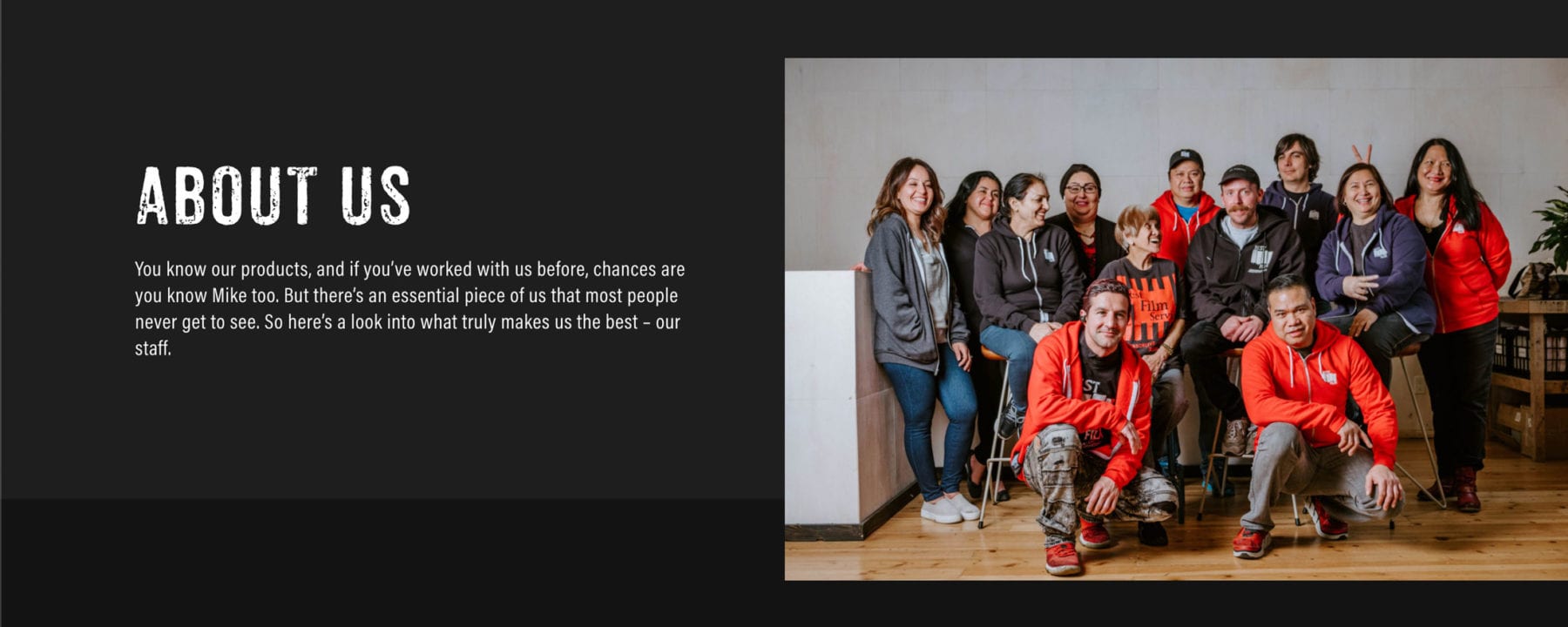
3. Don’t skimp on recruitment: Almost every business will need new bodies at some point. Too often we see nothing more than a basic form, or worse – nothing, leaving it up to people interested in a job to find those contact details.
Up to 29% of consumers prefer to buy from a brand that treats its employees well, so this copy will also be read by prospective customers! Write the messaging for potential hires as if you’re talking directly to them about team culture and values.
BluEarth Renewables has a fantastic recruitment page that reiterates their core values. This content is an excellent ethical gauge for both recruits and clients.
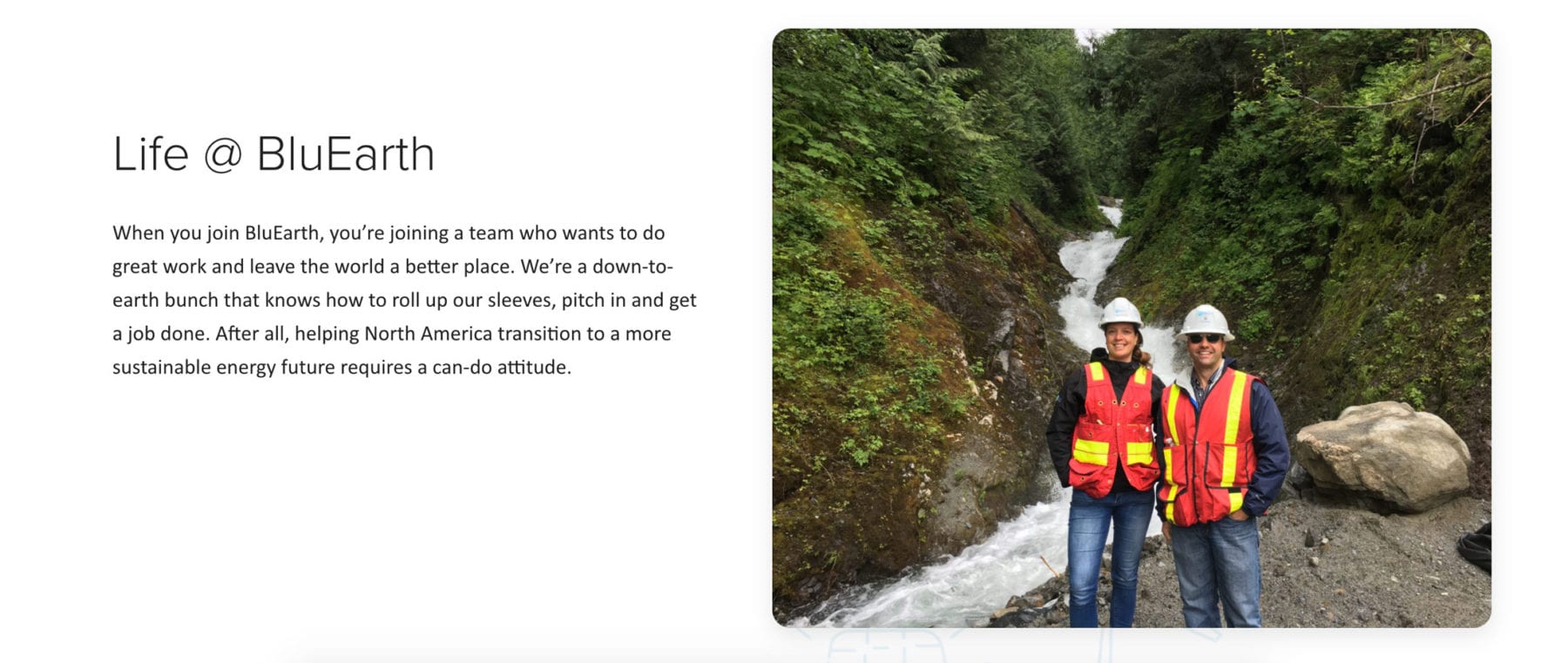
4. Sprinkle your whole website: I’ve talked about specific pages for better storytelling, but your differentiator should be flavouring everything you write – on every page! Whether it’s a product description, the history of the company, or a single sentence on a banner, a customer should understand who you are and what you care about.
This page on OneCoffee’s website is about how their compostable pods are made. They could have just described what goes into it, but instead they created a simple yet delightful page where every section rings with their message.
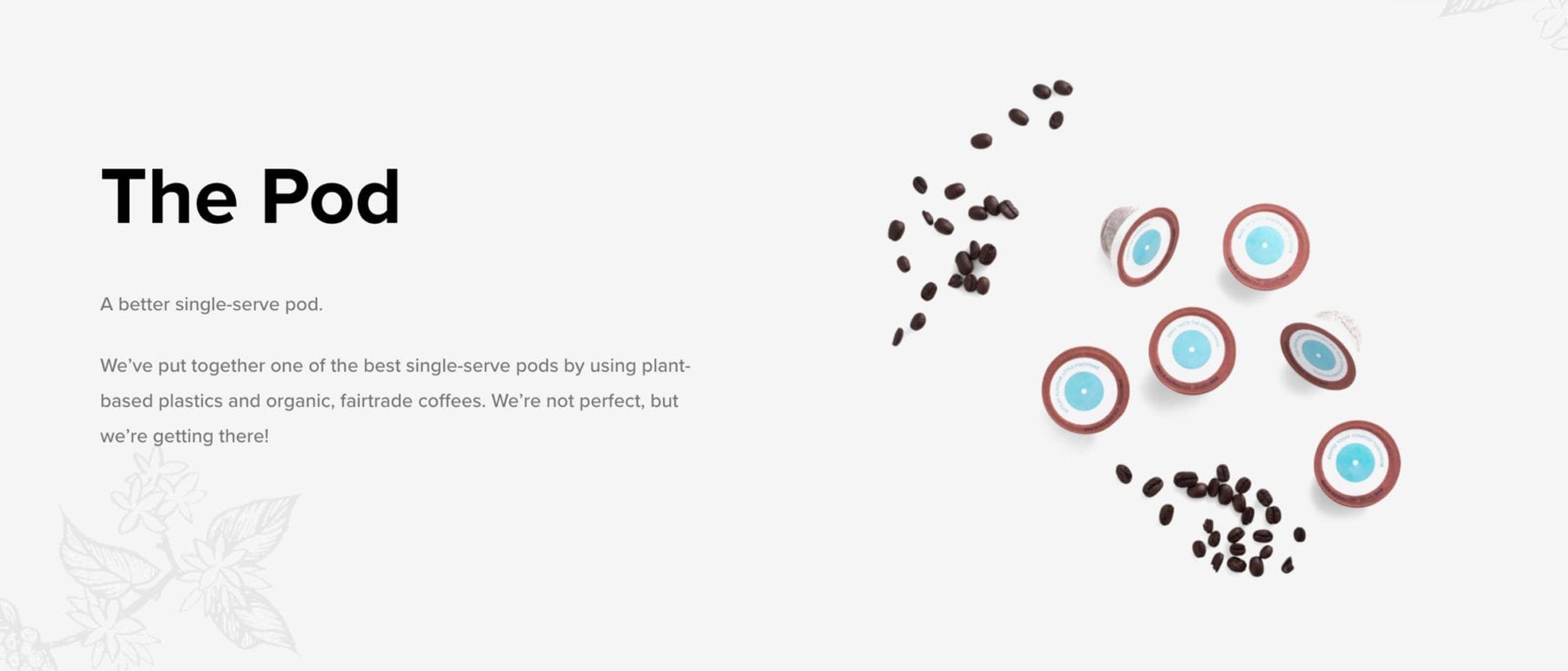
Adrenaline Studios’ homepage callout to view tattoo artists does a great job of reinforcing their shop mentality of respect. At the same time, it directly addresses a concern the reader might have: being nervous.


The Cheese
A pizza without cheese is just a flatbread (although a flatbread can have cheese and not become a pizza). I have strong feelings about this.
Cheese is casually crushing it in the background, working double-time to deliver a great texture and taste while keeping the toppings from falling all over your lap.
You don’t need five different cheeses, or an expensive cheese, to have a great pizza. A good mozzarella can do the job. In fact, getting too creative with cheese can spoil the taste of the whole pie.
Your website’s cheese is the motivational content that helps a visitor start their journey, find their way through your content, and convert. It’s not specifically persuading them of anything, like your core and differentiator content. It’s the copy they need to get excited, find their way around, and complete important actions that all that other content convinced them to take.
Examples of motivational content :
- Homepage
- Contact page
- Where to Buy page
- Book a Demo page
- Customer Support pages
- Callouts
- Forms, menus, and buttons
You might be thinking, “That’s extremely important content! Why didn’t we talk about that sooner?”
It’s easiest to write what you know, which is your services and products. It’s a little harder to write your differentiator and storytelling copy. But once you’ve done all of that, you’ll be in the perfect zone to write this motivational copy. Usable words will pop into your head.
If you start with your buttons and callouts because they look small and easy to check off, you risk writing boring, unbranded copy that could be found on any other website.
And here’s my personal secret, from years of writing copy for client websites: I always write the homepage last, because then it basically writes itself.
5 Tips to Write Motivational Copy that Sticks
1. Don’t obsess over your homepage: Sometimes companies come to us with big ideas for complicated homepages with the latest design trends and excessive media. The thing is, your homepage is NOT a destination! Unless you have a microsite with only one landing page, conversions aren’t happening here – the point isn’t for people to hang around. It’s a gateway to literally everything else on your website.
With that said, it’s the most highly viewed page, because it’s the one linked to your business profiles, social media, and listings like Google Maps.
What you want is a homepage with clear menus and callouts filled with enticing copy (your secret sauce), to get visitors quickly moving to the next step. And as I mentioned, if you’ve already written your other pages, you can paraphrase your own words or choose tasty excerpts to fill in the homepage callouts!
2. Be smart but not clever: There are lots of places in your website copy to be witty, if that’s your brand. But a wise writer will keep motivational content simple and clear.
If your menus are full of random words, how will a customer be able to find key pages? And if a button doesn’t state what will happen when it’s clicked, why the heck would a person use it? This microcopy needs to make immediate sense to do its job.
Naturally:wood’s website is a huge provincial resource, home to an immense amount of information. Their menu is tidy and straightforward, with clear paths to content.

3. Provide ample information: With pages like Where to Buy, Book a Demo, and Contact, you want the customer to complete these actions. This is where the money lies. Why, then, would you only include basic copy with the page title, your address and phone number, followed by a form?
Now is the time to remind them of your differentiator, and to describe what will happen next – the benefit to them.
Botanica’s Where to Buy page is a brilliant example of being helpful and incentivizing the reader. They feature multiple ways to find the nearest store selling their products, then take it one step further by offering a coupon for that purchase – and the coupon copy reassures you about spam and privacy.
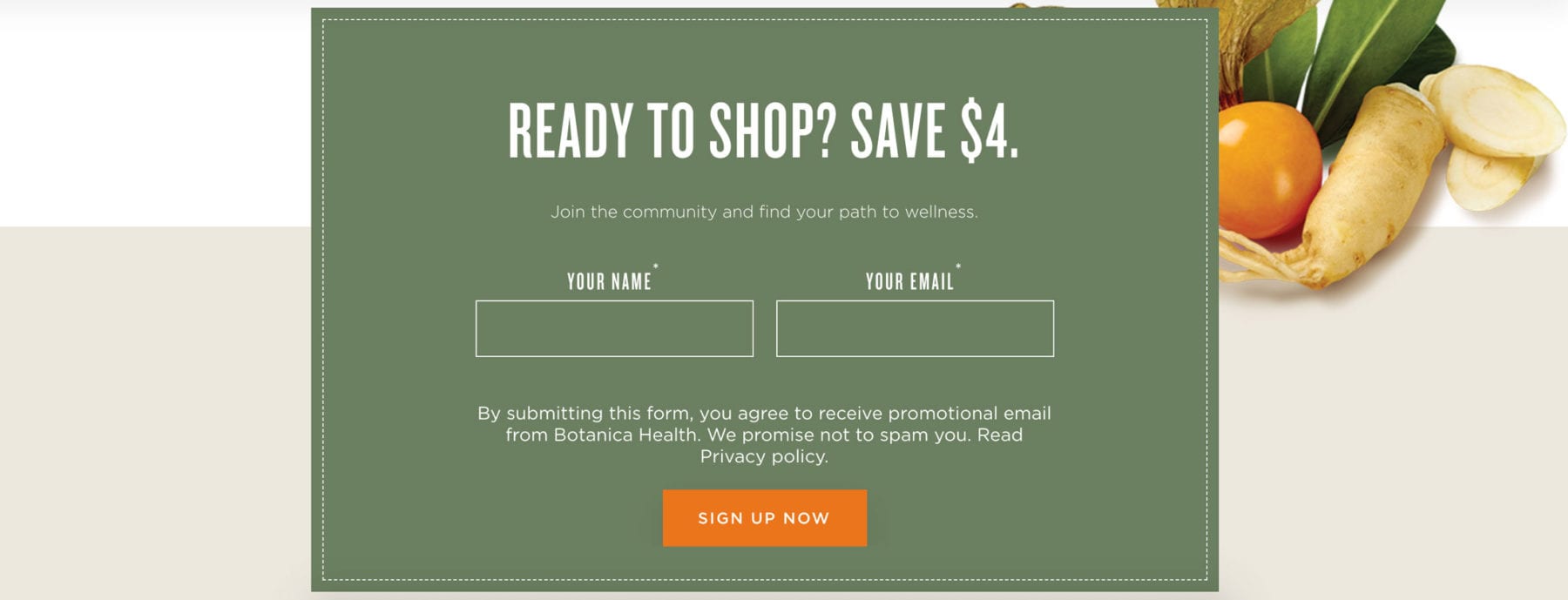
4. Don’t neglect your forms: Arguably the most important content on your website is your forms. That’s where people sign up, book in, or reach out. They generate leads and make sales. The copy above and within your forms is so incredibly important to whether or not you succeed. I could write a whole article on the topic of forms. Luckily other people already did, and I can just link to great resources.
- Here’s an article on how to write opt-in copy that doesn’t suck
- Hubspot has compiled this roundup of 10 examples of great web forms
- And here’s a solid starter on writing microcopy for forms
- If you’re serious about conversions, I highly recommend ordering Microcopy: A Complete Guide; this book is packed with tips and examples that will make your website awesome
5. Take advantage of hidden pages: There are some pages on your website that a person only sees after taking a specific action, like your Thank You page after filling out a form, and your 404 page after attempting to view a page that doesn’t exist.
Rather than throwing generic copy into those pages and calling it quits, use them to encourage a next step that isn’t exiting your site. You might recommend a popular blog post to read, or suggest specific pages they could find answers. Just don’t leave them hanging.

The Toppings & Extras
“The word ‘pizza’ first appeared in a Latin text from the central Italian town of Gaeta…in 997 AD; the text states that a tenant of certain property is to give the bishop of Gaeta duodecim pizze (twelve pizzas) every Christmas Day, and another twelve every Easter Sunday.” – Wikipedia
You read that right. The first-ever recorded reference to pizza was about giving it to a bishop, who hopefully used all those free pies to throw the first epic pizza parties.
The original pizza topping of Naples in the late 1800s was simple: fresh tomatoes. Nowadays, pizza toppings are where your personality shines! Vegetables. Meat. Extra sauces and spices. Fusion food. There are dessert pizzas, taco pizzas, and even a $500 tequila lobster pizza with caviar and truffle shavings.
And that’s not to mention the shakers and dipping sauces sold by most fast food pizza joints.
You can have a pizza without toppings, but most people will find it boring. Likewise, you can have a website with no marketing content. It just won’t drive as many conversions, and it certainly won’t hook visitors or search engines as well as a site that regularly features fresh content.
This article you’re reading is my latest tasty topping for the Forge and Smith site! We don’t need a blog post on how to write website content, but it supports our goals – to craft great websites and teach clients how to support them using digital strategy.
Examples of marketing content:
- Blog posts
- Research papers
- Infographics
- Videos
- Recipes or project guides (ways to use your product)
- Resources or tools
- Gated content
- Social media feed
The important thing to remember about marketing content is to focus on quality, not quantity. If you have a hard time writing it, it’s better to take your time and produce one good blog post every couple of months than to set an unreasonable deadline and write bad content.
You can also outsource this kind of writing. No one expects you to learn how to write SEO-friendly copy, design images, and film videos on top of your regular job. Lots of agencies specialize in helping you choose keywords, write blog posts, or produce videos.
If you’re keen to tackle it yourself, that’s awesome.
5 Tips to Write Enticing Marketing Content
1. Answer the big questions: Oh hey, remember this tip from writing your core content? The best blog topics to make your customers AND search engines happy is answering questions people ask about your products or services. If your customer service team or contact emails reveal common questions, turn them into topics. You can take a question from your FAQs and turn it into a great blog post.
2. Let the topic dictate the length: There’s no best or worst number of words for a blog post, or any other type of marketing content. If it only takes 300 words to answer a question, you will create a bad user experience if you try to drag it out to 2000 words just because you heard that longer blog posts are better. Save those for your deep, educational content – like this article you’re reading right now. Your case studies or client success stories can have fewer words and more photos, it’s okay.
3. Make it easy on the eyes: If you do end up writing a glorious long-form post, think about a person reading it on their phone. Do your copy a favour by styling it for the mobile reader – keep paragraphs short, use logical headings for structure, and break it up with bullet lists and images. Then add a table of contents plugin to help visitors navigate to the exact section they want. Styling increases the chance of a potential customer reading it all, getting what they need, and appreciating you as a resource.
4. Keep lists of topic ideas: Don’t wait until you sit down to write to think of what will make good content. Look at the kinds of articles you enjoy reading, what competitors write, and the posts your customers share or comment on. That’s gold, right there. Here are 20 awesome blog topic ideas to help you get going! And here are tips to plan a whole year of great content (no budget required).
5. Learn SEO basics: You don’t have to master SEO, but you can read up on how to write for search engines. This amplifies the payoff for the time you spent writing, by increasing website traffic and potential conversions. You should always prioritize relevant topics that your customers care about over keywords – but you can still keep your blog posts and pages optimized.
Bonus tip: repurpose your work! If you take the time to write marketing content, you should get the most out of it. That means turning a blog post into social media posts, infographics, videos, audio, downloads – the works! I’ve written another blog post about how to repurpose content.
Tools for Better Writing
What kind of article about ‘how to write website content’ would skip talking about the technical side of writing?
I can’t teach you a course on writing in this post, although I have experience with that! But I do get that you might be nervous about your ability to string sentences together. Honestly, the best thing to do is get it all out, then read it aloud to yourself and get a friend to read it as well.
Remember, you’re likely not trying to write a literary masterpiece. You’re trying to recreate the human experience of your company’s customer service, for your website.
Here’s a list of excellent (and free) resources to improve your writing skills.
- Check out dozens of free copywriting courses on Skillshare, many of which are only an hour long
- Udemy has a free copywriting quickstart course
- You can take this marketing copy course from LinkedIn Learning by signing up for a free first month
Hopefully these insights put you on the ‘write’ track (humour me, it’s been a long post) toward great website content! Remember to be human, address the things your customers care about, and make it mobile-friendly. When in doubt, reach out! We’d love to help you serve up tasty content to your customers.




